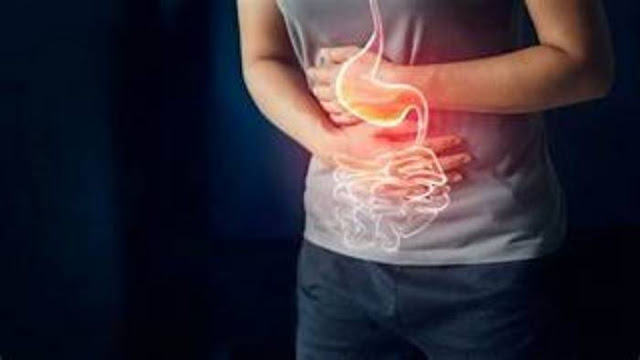Gastrointestinal diseases encompass a broad range of disorders that affect the tissues and structures of the digestive system, including the esophagus, stomach, small and large guts, liver, gallbladder, and pancreas. These conditions can vary in severity, symptoms, and causes.
·
Gastroesophageal Reflux Disease (GERD): Gastroesophageal Reflux Disease (GERD) is a chronic digestive ailment where stomach acid regularly
flows back into the esophagus, causing symptoms like heartburn, regurgitation,
chest pain, and sometimes difficulty swallowing. It often results from a
weakened lower esophageal sphincter, which fails to prevent the backflow of
acid. Lifestyle changes, such as dietary modifications, weight management, and
elevating the head of the bed, can help alleviate symptoms. Medications like
antacids, proton pump inhibitors, and H2 blockers may also be prescribed. In
severe cases, surgical actions may be considered to fortify the lower
esophageal sphincter and reduce acid reflux. Untreated GERD can lead to
complications, including esophageal damage and Barrett's esophagus.
·
Peptic Ulcer Disease: Peptic ulcers are exposed
sores that mature on the inner lining of the stomach or the upper part of the
small intestine, often caused by the bacterium Helicobacter pylori or the use
of nonsteroidal anti-inflammatory medicines (NSAIDs).
·
Irritable Bowel Syndrome (IBS): IBS is a
functional intestinal disorder considered by abdominal pain, bloating, and
changes in intestine habits, such as diarrhea, constipation, or both.
·
Inflammatory Bowel Disease (IBD): IBD includes
conditions like Crohn's sickness and ulcerative colitis, which are chronic
inflammatory disorders of the intestines, leading to symptoms like diarrhea,
abdominal pain, and weight loss.
·
Celiac Disease: Celiac disease is an autoimmune ailment
caused by the ingestion of gluten, a protein found in straw, barley, and rye.
In people with celiac disease, consuming gluten leads to an immune response
that costs the lining of the small intestine, impairing nutrient absorption.
This can outcome in a wide range of symptoms, including diarrhea, abdominal
pain, bloating, fatigue, and skin rashes. The only actual treatment for celiac
disease is a strict gluten-free diet, which can alleviate symptoms and prevent
complications. Without proper management, celiac disease can lead to
nutritional deficiencies and long-term health issues. Early diagnosis is
crucial for a healthier life.
·
Diverticulitis: Diverticulitis contains the
inflammation or infection of small pouches (diverticula) that can develop in
the walls of the colon, leading to abdominal pain, fever, and changes in bowel
habits.
·
Gallstones: Gallstones are solid subdivisions
that form in the gall bladder and can block the bile ducts, causing severe
pain, nausea, and vomiting.
·
Pancreatitis: Pancreatitis is the puffiness of
the pancreas, which can be acute or chronic and result in abdominal pain,
digestive problems, and diabetes.
·
Hepatitis: Hepatitis is inflammation of the
liver, typically caused by viral infections (e.g., hepatitis A, B, C) but also
by alcohol abuse, toxins, or autoimmune reactions. It can lead to liver
dysfunction, jaundice, and cirrhosis.
·
Gastroenteritis: Gastroenteritis is an infection or swelling of the stomach and intestines, often caused by viruses, bacteria,
or parasites, leading to symptoms like diarrhea, vomiting, and abdominal pain.
·
Gastrointestinal Bleeding: Gastrointestinal bleeding can occur anywhere in the digestive tract and may be caused by
conditions like peptic ulcers, gastritis, esophageal varices, or colorectal
cancer.
·
Cirrhosis: Cirrhosis is the advanced scarring of
the liver tissue, often due to chronic liver diseases (such as hepatitis or
alcoholism), leading to liver failure, jaundice, and fluid retention.
·
Colon Polyps: Colon polyps are benign growths in
the colon lining that can potentially become cancerous over time if left
untreated.
·
Gastroparesis: Gastroparesis is a ailment in
which the stomach muscles do not function properly, leading to delayed stomach
emptying and symptoms like nausea, vomiting, and abdominal discomfort.
·
Malabsorption Syndromes: Various conditions,
including celiac disease and pancreatic insufficiency, can lead to
malabsorption of nutrients, resulting in malnutrition and digestive problems.
·
Short Bowel Syndrome: Short bowel syndrome
occurs when a significant portion of the small intestine is removed or
dysfunctional, leading to impaired nutrient absorption and diarrhea.Short Bowel
Syndrome (SBS) is a condition characterized by a significant portion of the
small intestine being surgically removed or dysfunctional due to disease. This
can lead to impaired nutrient absorption, diarrhea, malnutrition, and
electrolyte imbalances. Treatment typically involves dietary adjustments,
medications, and, in severe cases, parenteral nutrition (intravenous feeding).
·
Bowel Obstruction: Bowel obstruction is a impasse
in the small or large intestine, often caused by adhesions, hernias, or tumors,
resulting in severe abdominal pain and vomiting.
·
Lactose Intolerance: Lactose intolerance is the incapacity
to summary lactose, a sugar found in milk and dairy harvests, leading to
gastrointestinal symptoms such as bloating, diarrhea, and abdominal pain.
·
Gallbladder Disease: Apart from gallstones,
various other conditions like gallbladder inflammation (cholecystitis) and
dysfunctional gallbladder (biliary dyskinesia) can affect this organ.
·
GI Cancers: Various types of gastrointestinal
cancers can occur, including esophageal cancer, gastric (stomach) cancer,
colorectal cancer, and liver cancer, among others.
These examples highlight the diversity of gastrointestinal
diseases, each with its own causes, symptoms, and treatment approaches. It's indispensable
to consult a healthcare professional if you suspect you have a gastrointestinal
condition to receive an accurate diagnosis and appropriate treatment.
